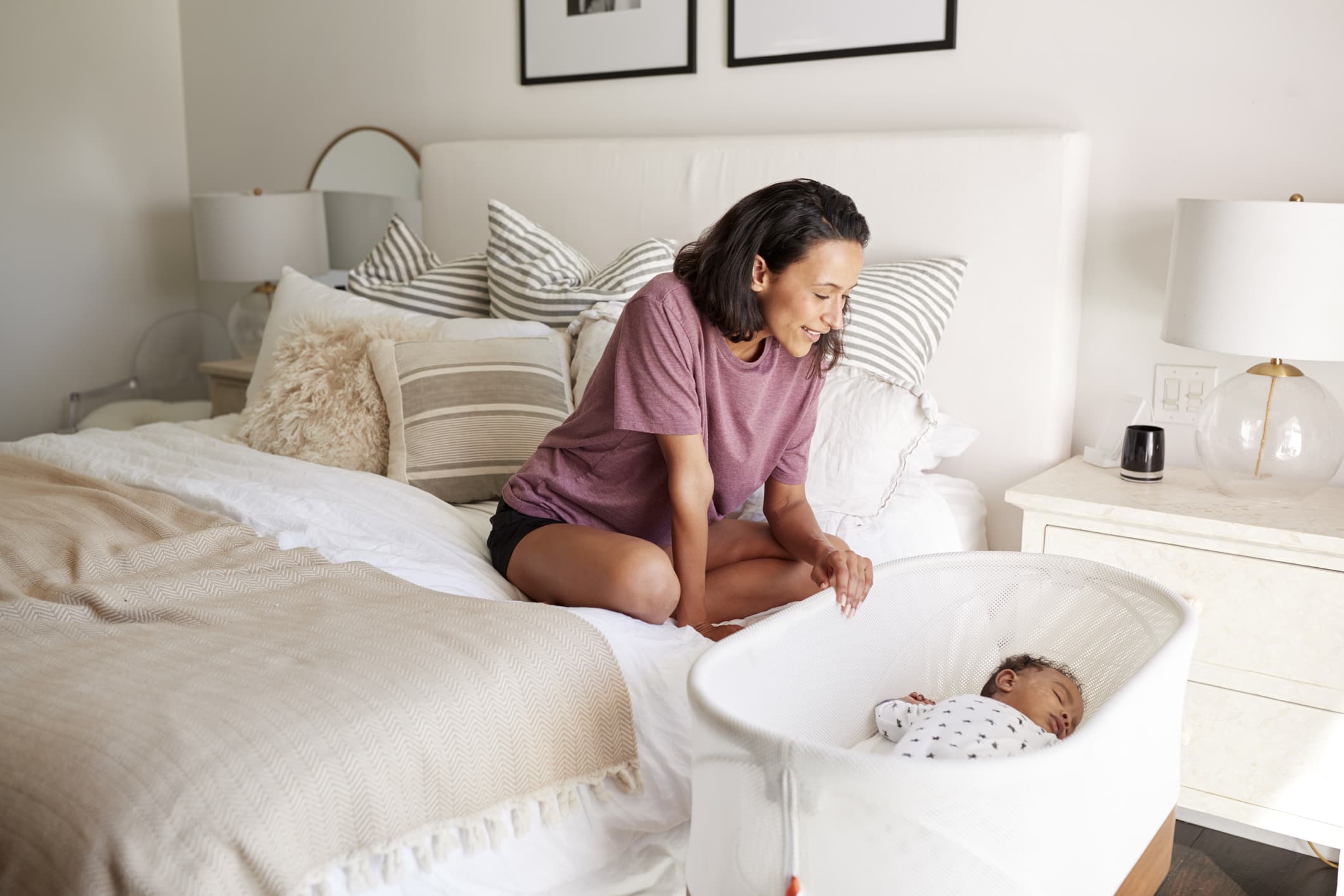It is top of mind for most new parents to figure out how to get quality sleep for themselves and their babies. Parents are often unprepared for the sleep deprivation of having a tiny human who relies on them. In moments of desperation, they may turn to unsafe sleep practices. While I totally get it and have been there myself, parents must do their best to follow safe sleep practices, even overlooked ones, to protect their little ones.
As parents, we’re concerned with ensuring our babies get the safest sleep possible. It’s important to follow best practices and expert recommendations even when you’re at your most sleep-deprived to keep your baby safe.
Safe Sleep Practices to Remember
Here are some of the most important yet overlooked safe sleep practices to keep in mind1:
Babies Should Sleep on Their Backs
You should always put your baby to sleep on their back during nap times and bedtimes. I often see parents place babies on their bellies for sleep once they can roll. However, even when babies start to roll, it’s best to start them sleeping on their back and let them roll to their belly on their own. Then you can allow them to sleep in that position.
Babies Should Sleep on a Firm Mattress
The mattress, covered with a tightly fitted sheet, should be firm enough that your baby doesn’t indent it when lying on it. Most parents don’t learn to recognize this, but it is important that the firmness is up to safety standards for infants.
Avoid Items in Their Sleep Area
Despite the pretty images online, you should avoid putting any items in the crib with your baby, including stuffed animals, blankets, bumpers, and other toys for the first year of life. One small pacifier that’s not attached to anything and a fitted swaddle or sleep sack is fine!
Share a Room
You should share a room for the first six months with your baby, but they should sleep in their own space. Allowing your baby to sleep in bed with you can be problematic because it increases the chances of suffocation from blankets, pillows, and even you or your partner. Babies can also overheat or fall off the bed.
Offer a Pacifier
As your baby is drifting off to sleep, giving them a pacifier can help reduce the risk of SIDS and help them feel soothed2. While not all babies will take a pacifier, it can make a huge difference if they do.
Avoid Strings or Cords
Make sure no strings or cords are near your baby’s sleeping area because it could lead to strangulation. This can include cords from window blinds, the baby monitor, or a low-hanging mobile.
Other Guidelines to Consider
You’ve likely heard or read about many of these, but there are a few other overlooked safe sleep practice guidelines that you may not know and some of which I learned myself recently:
1. Avoid Putting Blankets Over the Stroller
When your little one falls asleep while out and about, it might be tempting to throw a light blanket over the stroller or car seat to shield them from the sun. While there currently is no scientific evidence, many parenting experts have recently been talking about how a blanket can heat the space up too much and possibly put your baby at risk of overheating.
To be extra cautious, instead, use the built-in stroller shade (most strollers have one) or something with breathable holes like the SnoozeShade.
2. Keep Car Seat Sleeping to a Minimum
Does your baby drift off to peaceful slumber within minutes of going on a drive3? You’re not alone. We’ve seen parents resort to driving to get their baby to sleep in TV shows, movies, and even car commercials. But you should avoid allowing your baby to sleep in a car seat because it could lead to positional asphyxiation, as a baby’s body could unintentionally block their airway. This is especially true in the early months when they can’t yet hold their little head up.
The best thing to do is refrain from using the car seat whenever you aren’t in the car. We know it can be tempting to carry the entire car seat inside and let them nap in it, but you should avoid this. Try transferring them from the car seat to their crib or play yard. If that doesn’t work, you can babywear them and let them sleep on you. While not ideal, it’s a better, safer option than the car seat.
3. Stop Swaddling When They Roll Over or By 4 Months
New parents often rely on swaddling to replicate the closeness of the womb and to contain the Moro reflex. The swaddle should be tight enough that it won’t come undone without interfering with breathing or hip movement. Remember that babies should still sleep on their backs, especially in a swaddle.
While swaddling can help them sleep better, using a swaddle has a time limit. Once your baby can roll over, stop swaddling. That could be within 2-4 months. There is no guarantee that when they roll onto their tummy, they can roll back, making the blanket a hazard. If your baby is not rolling by 4 months old, it is best to stop swaddling so you can encourage this and ensure the swaddle isn’t preventing them from trying to roll, which is an important developmental milestone.
If you’re concerned about your little one getting their safest sleep, or any sleep at all, you could consider working with a pediatric sleep consultant. Remember, the early stages are temporary. You are not alone, and there are resources available to you!

 PARENTING TIPS
PARENTING TIPS PREGNANCY
PREGNANCY BABY CARE
BABY CARE TODDLERS
TODDLERS TEENS
TEENS HEALTH CARE
HEALTH CARE ACTIVITIES & CRAFTS
ACTIVITIES & CRAFTS


